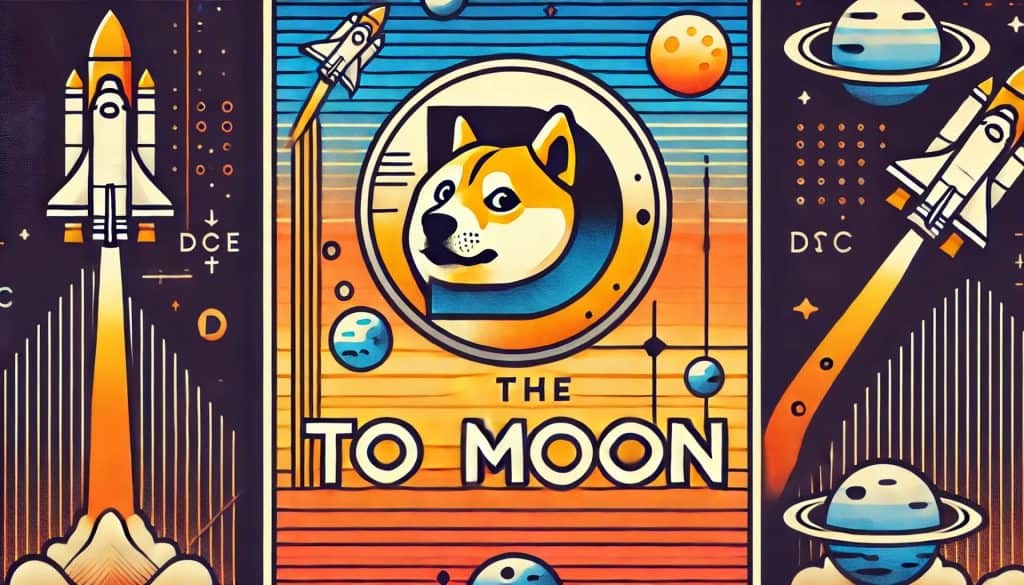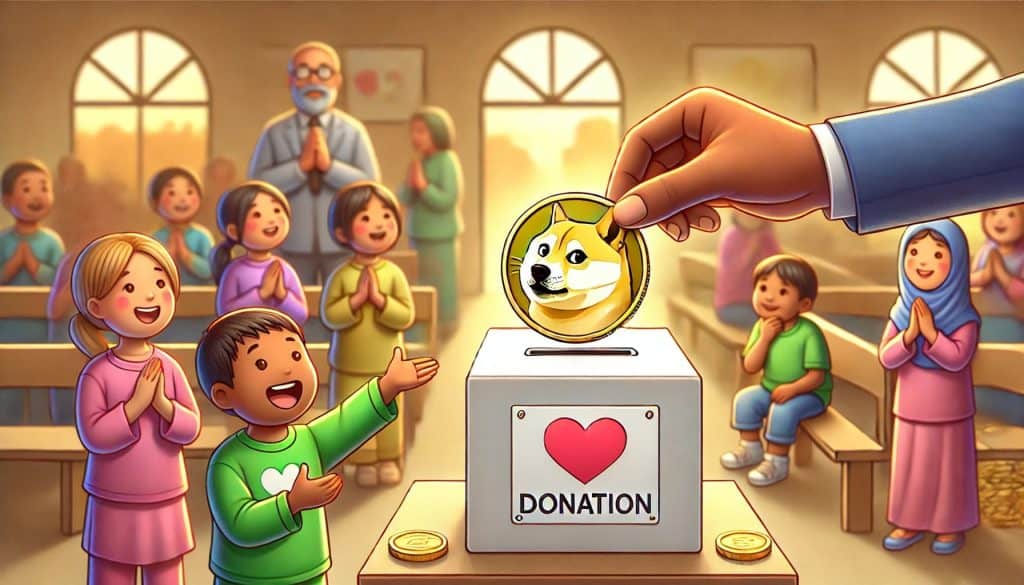In the world of cryptocurrency, Dogecoin stands out as a unique and fascinating phenomenon. Originally created as a lighthearted joke, it has evolved into a widely recognized and utilized digital currency with a strong and active community.
What is Dogecoin?

A cryptocurrency that started as a joke, Dogecoin has become an important player in the digital currency world. Its quirky origins and vibrant community have attracted many investors and enthusiasts. But what is it, and what is it used for? This post will explore the answers to these questions and more, giving you a comprehensive look into the world.
Backgrounds
Billy Markus and Jackson Palmer created Dogecoin in 2013 as a parody of Bitcoin. They drew inspiration from the popular “doji” meme featuring the Shiba Inu dog, intending the currency to be fun and accessible, in contrast to Bitcoin’s serious and complex nature.
Initially, it gained popularity through social media and online communities. Its friendly and humorous approach attracted a large audience and made it a favorite among those new to cryptocurrency.
To learn more about the origins and importance, you can watch these informative videos
Development
Dogecoin’s journey from joke to valuable digital asset has been an interesting one, with its user base and market value growing significantly over the years.
| Year | Events |
|---|---|
| 2013 | The creation and launch of Billy Marcus and Jackson Palmer |
| 2014 | The community funds a variety of causes |
| 2018 | Dogecoin reaches $2 billion market cap |
| 2021 | Celebrity endorsements spike popularity |
Evolution has shown resilience and adaptability, making it a unique cryptocurrency in the digital space.
Types of Dogecoin
While this exists as a cryptocurrency, it can be utilized in a variety of ways within the blockchain ecosystem. Common uses include
- P2P transactions: Used for fast, low-cost transactions between individuals.
- Charity and fundraising: The community has a history of supporting charitable causes.
- Tip: Online communities use this to give tips to content creators.
- Goods: Some online retailers accept this as payment for goods and services.
How does Dogecoin work?

Dogecoin operates on a decentralized blockchain network. Like Bitcoin, it uses a proof-of-work consensus mechanism to validate transactions and secure the network. Here’s a quick summary of how it works
- Mining: Miners use their computational power to solve complex math problems and validate transactions to add them to the blockchain.
- Transactions: Users send and receive these through their digital wallets. Transactions are verified by miners and recorded on the blockchain.
- Reward: Miners are rewarded with this for their efforts to maintain the network.
Dogecoin Utilities
Understanding the utility of this coin is critical to understanding the coin’s value proposition. Here are a few key points
- Transaction fees: One of the main benefits of this is the low transaction fees, which is ideal for small transactions and tipping online content creators.
- Speed: Transactions are processed quickly on this network, making it efficient for day-to-day transactions.
- Community support: This active community frequently uses it for fundraising and charitable purposes, demonstrating its usefulness beyond simple financial transactions.
Companies in Dogecoin
Several companies and organizations have embraced the coin, either by accepting it for payment or by supporting the ecosystem, with some notable examples including
Tesla
Tesla accepts crypto for certain goods, demonstrating its usefulness in the retail sector.
Mark Cuban’s Dallas Mavericks
Mark Cuban’s Dallas Mavericks accept Dogecoin for tickets and merchandise, highlighting the growing acceptance in the sports industry.
Bitpay
Payment processor BitPay supports Dogecoin transactions, making it easier for businesses to integrate this cryptocurrency into their payment systems.
These companies show increasing acceptance and usefulness in the real world. To illustrate the growing acceptance, let’s take the example of 360Core, Inc:
Uses of Dogecoin

Use cases extend beyond simple transactions. Here are a few examples
- Tips: Platforms like Reddit and Twitter integrate tipping, allowing users to reward content creators.
- Fundraising: It has been used for various crowdfunding campaigns, such as raising funds for a bobsled team in Jamaica and a clean water project in Kenya.
- E-commerce: Some online stores are accepting it as a payment method, expanding the use case in retail.
Inflation
This is one important factor in understanding its inflationary nature. Unlike Bitcoin, which has a supply of 21 million coins, it has no maximum supply limit, resulting in the constant creation of new coins.
Pros and Cons
It has its advantages and disadvantages, which are important considerations for anyone looking to invest in or use this cryptocurrency.
| Prose | Cones |
|---|---|
| Fast and cheap transactions | High inflation rate |
| Strong, active community | Fixed supply shortage |
| Easy to use and accessible | Perceived as less serious than other passwords |
| Support for philanthropy | Heavily influenced by social media trends |
Dogecoin vs Bitcoin
Comparing Dogecoin and Bitcoin can provide insight into their unique characteristics and potential uses.
Similarities
- Blockchain technology: Both cryptocurrencies operate on blockchain technology to ensure secure and transparent transactions.
- Decentralized: Both cryptocurrencies are not controlled by a central authority and maintain their decentralized nature.
Differences
| Features | Dogecoin | Bitcoin |
|---|---|---|
| Create | Billy Marcus and Jackson Palmer’s 2013 | Satoshi Nakamoto, 2009 |
| Supply limits | Unlimited 10,000 new coins per minute | 21 million coins |
| Transaction speed | Faster transaction confirmations | Slow transaction confirmation |
| Using cases | Microtransactions, tips, and charity | Store of value, large transactions |
For new investors, the question of whether to invest in both cryptocurrencies is often a question. The answer depends on what you’re looking for. Investors prefer Bitcoin for storing value and investment potential, while those seeking fast transactions and community involvement often choose Dogecoin.
Conclusion
Dogecoin’s journey from meme to mainstream cryptocurrency is a testament to its unique appeal and strong community support. While it has its pros and cons, its impact on the digital currency landscape is undeniable. Understanding it’s background and capabilities is essential, whether you’re drawn to it for its low transaction fees, community support, or investment potential.
Resources
- Investopedia. Dogecoin.
- Coinbase. What is Dogecoin?
- Techpedia. Dogecoin.
- Blockchain Council. What is Dogecoin? All You Need to Know.
- Forbes. What Is Dogecoin? A Brief Guide For Investors.
